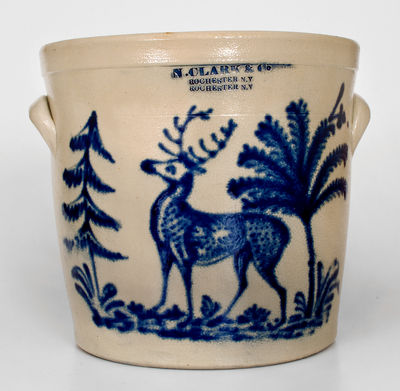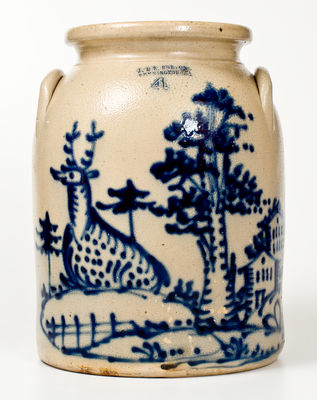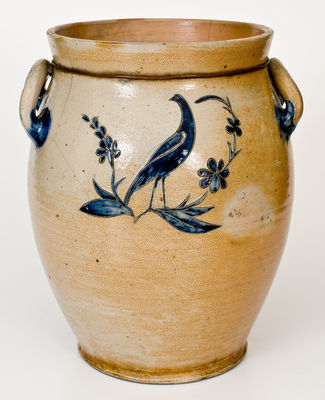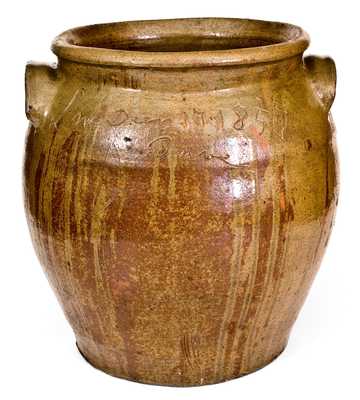Extremely Rare and Important Ten-Gallon Michigan Stoneware Advertising Jar, Signed "From Balsley Detroit," Dated 1859, ovoid jar with heavily-tooled shoulder, squared rim, and applied lug handles, the shoulder with incised and cobalt-highlighted inscription "From Balsley Detroit". Body of jar cobalt-decorated with heavy, leaf-shaped brushwork surrounding the incised and cobalt-highlighted inscription, "L. Bradley / Wholesale Grocer / Marshal". Base inscribed in cobalt "No 10 / 1859". Large cobalt highlights to handle terminals. The incised maker's signature at the top of this jar, "From Balsley Detroit" refers to father and son stoneware potters, Samuel and Theodore Balsley. Both men were born in Pennsylvania and were living in Pittsburgh in 1850, the family having relocated to Detroit by 1859, when this jar was manufactured. While a number of stoneware vessels representing the Balsleys' Detroit products survive, impressed "T.S. BALSLEY / MANUFACTURER / DETROIT, MICH.," this jar most likely represents the earliest-known surviving example of their work. The 1860 Federal Census for Marshall, Calhoun County, Michigan, lists a grocer named Samuel Bradley with a wife named Laura. The elaborate script on this jar says "L. Bradley" or "S. Bradley," referring to either Laura or Samuel Bradley. This large, showy piece was presumably displayed in the front of the Bradley’s grocery store. Few Michigan stoneware pieces of this size and decorative quality exist today. Possibly one of the finest examples of Michigan stoneware known. A minor rim chip and a 1 5/8" rim chip with 3 1/2" hairline descending from it. Long, glazed-over horizontal surface line at base, which occcurred in the firing and is not visible on the interior. A few base chips. A 1 7/8" base flake, primarily visible on underside. A few other base chips. A very faint 2" X-shaped surface line on reverse, which is not visible on interior and likely occurred in the firing. A chip to each handle. H 20 1/2".














